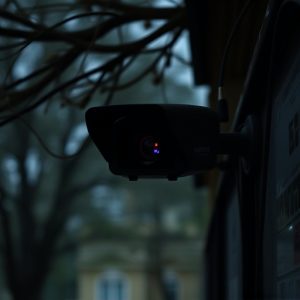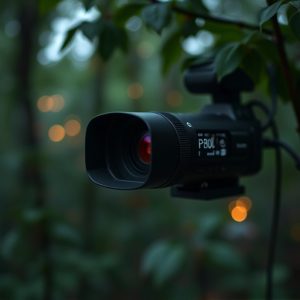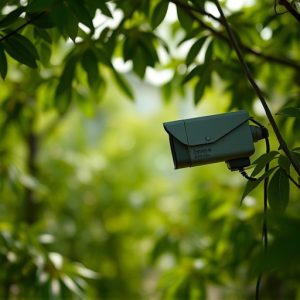Detecting Hidden Cameras: RF Guide, Battery Life, and Advanced Tools Comparison
Hidden camera technology has evolved dramatically, with radio frequency (RF) transmission enabling c…….
Hidden camera technology has evolved dramatically, with radio frequency (RF) transmission enabling compact and discreet devices. Battery life spy camera comparison is crucial, as advanced batteries allow these cameras to operate continuously for extended periods on a single charge. RF detection technology uncovers hidden cameras by identifying wireless signals, offering significant advantages over traditional methods in terms of both battery life and continuous monitoring. By understanding battery performance, individuals can select cameras suitable for their surveillance needs. This comprehensive approach, combining battery life spy camera comparison with RF detection, helps protect privacy in today's digital era.
Uncover the insidious world of hidden cameras with our comprehensive guide. Learn how radio frequency (RF) detection techniques play a pivotal role in identifying covert surveillance devices. We demystify the technology, providing insights into the subtle art of spotting hidden cameras. From understanding camera operation to analyzing battery life—a critical indicator—this article offers a practical comparison of detection methods. Discover advanced tools and techniques to locate discreetly placed cameras, empowering you with knowledge to protect your privacy in today’s digital age.
- Understanding Hidden Camera Technology: A Brief Overview
- The Role of Radio Frequency (RF) Detection in Uncovering Spy Cameras
- Assessing Battery Life: A Key Indicator for Spy Cameras
- Practical Comparison: Detecting Hidden Cameras Using RF Signals
- Advanced Tools and Techniques for Locating Discreetly Placed Cameras
Understanding Hidden Camera Technology: A Brief Overview
Hidden camera technology has evolved significantly over time, transforming from bulky and easily detectable devices to compact, high-tech spy cameras that can operate discreetly. These miniature recording devices often utilize wireless technologies, such as radio frequency (RF) transmission, to transmit video feeds and data without drawing attention. In contrast to traditional wired cameras, RF models offer unparalleled flexibility in positioning and monitoring, making them a preferred choice for covert surveillance.
One notable aspect of modern hidden cameras is their battery life—a critical factor in spy camera comparison. Advanced batteries and energy-efficient components allow these devices to operate for extended periods on a single charge, ensuring continuous monitoring without the need for frequent recharging or replacement. This longevity not only enhances their functionality but also underscores the sophisticated design and engineering that goes into creating these seemingly innocent yet powerful tools.
The Role of Radio Frequency (RF) Detection in Uncovering Spy Cameras
Radio Frequency (RF) detection plays a pivotal role in uncovering hidden spy cameras, offering a sophisticated method to enhance security and privacy. These devices operate by identifying radio signals emitted from active cameras, which often run on wireless power and communication channels. By detecting these RF emissions, experts can pinpoint the location of covert surveillance equipment, even if they are not physically visible.
RF detection provides an edge in terms of battery life spy camera comparison, as it allows for continuous monitoring without requiring constant physical scans. This technology is particularly useful in high-risk areas where frequent manual inspections may be impractical. It enables professionals to remotely detect and neutralize hidden cameras, ensuring a more efficient and comprehensive security approach.
Assessing Battery Life: A Key Indicator for Spy Cameras
Assessing battery life is a crucial method for detecting hidden cameras, especially in the realm of spy cameras. Unlike wired cameras that are tethered to power sources, spy cameras operate on batteries, making their energy consumption a key indicator of their activity and longevity. When comparing different spy cameras, examining their battery life becomes an essential factor. Cameras with longer battery durations suggest less frequent charging or replacement, potentially indicating a more active surveillance setup.
In terms of practical application, a robust battery life allows users to remotely monitor environments without the need for constant recharging, making it easier to detect and locate hidden cameras. This aspect is particularly vital in today’s digital era where spy cameras can be discreetly placed in various settings, from homes to public spaces. By understanding battery performance, individuals can better navigate the market, choosing cameras that align with their needs for extended surveillance without the hassle of frequent power sources.
Practical Comparison: Detecting Hidden Cameras Using RF Signals
Detecting hidden cameras using radio frequency (RF) signals offers a practical and effective method to uncover clandestine surveillance equipment. When compared to other methods, RF detection stands out due to its ability to locate devices independently of power sources or network connections. Unlike battery-powered spy cameras that may have limited lifespan, RF detectors can pinpoint the source of electromagnetic radiation emitted by these hidden cameras, even if they’re dormant.
In terms of battery life spy camera comparison, RF-based systems often prove more reliable and consistent. While traditional methods might rely on active signals or physical visual confirmation, RF detection provides continuous monitoring, making it ideal for thorough searches in sensitive areas. This capability ensures that any hidden camera, regardless of its power status, can be detected, offering a comprehensive security solution.
Advanced Tools and Techniques for Locating Discreetly Placed Cameras
In today’s digital age, the potential for hidden cameras poses a significant privacy concern. Fortunately, advanced tools and techniques are available to help individuals detect these discreetly placed devices. One of the key areas to focus on is spy camera comparison. By evaluating different models based on features like battery life, sensitivity, and detection range, users can choose the most effective tool for their needs.
Specialized equipment, such as RF (radio frequency) detectors, plays a crucial role in locating hidden cameras. These devices emit signals that interfere with the camera’s operation, making them invaluable for identifying active surveillance devices. Moreover, advanced software algorithms that analyze electromagnetic signatures can pinpoint the exact location of a hidden camera, enhancing detection accuracy. This, coupled with regular physical inspections and awareness of common hiding spots, ensures users stay protected in an era where privacy is increasingly at risk.
In light of the evolving technology behind hidden cameras, understanding their operation and employing effective detection methods like RF signal analysis are crucial. This article has explored the role of radio frequency (RF) detection in uncovering spy cameras, highlighting the importance of assessing battery life as a key indicator. Through practical comparisons and advanced tools, readers now have valuable insights into detecting discreetly placed cameras. By staying informed about these tactics, individuals can better protect their privacy in today’s digital era.


